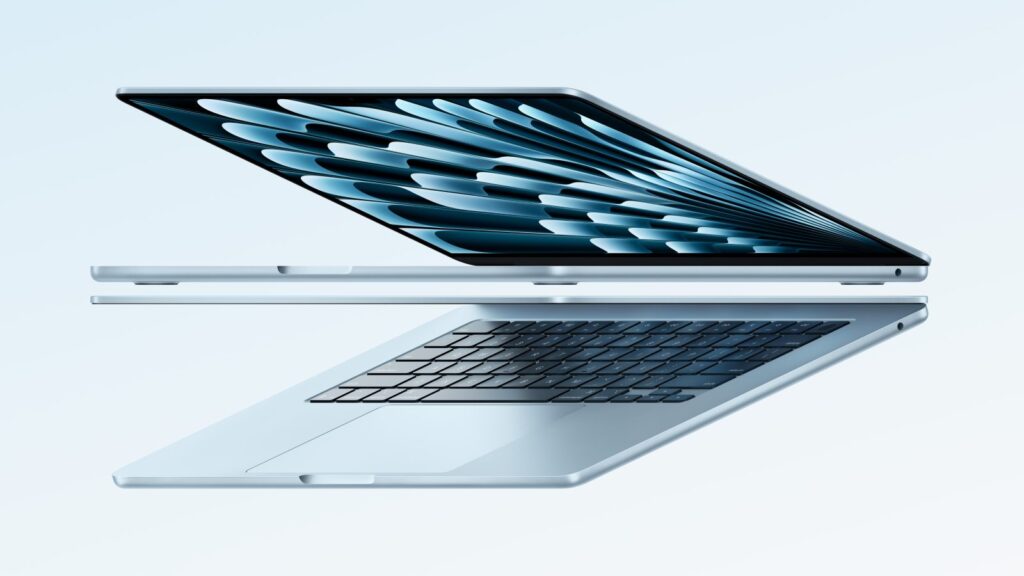
This week, renowned analyst Ming-Chi Kuo revealed that Apple is reportedly venturing into a new segment of the laptop market. The tech giant is said to be developing a more affordable MacBook, priced lower than the current MacBook Air. This new model is expected to feature the A18 Pro chip, the same processor found in the upcoming iPhone 16 Pro and iPhone 16 Pro Max. As Apple fans and industry watchers eagerly anticipate this potential addition, the question remains: will Apple successfully deliver a cost-effective yet capable MacBook, or will it fall short of expectations?
The announcement comes as Apple continues to diversify its product lineup, aiming to capture a broader audience. According to rumors, the budget-friendly MacBook will feature a 13-inch display and will be available in four colors—blue, yellow, pink, and silver—mirroring the palette of Apple’s entry-level iPad. Production is anticipated to commence either in the fourth quarter of this year or the first quarter of 2026.
Historical Context and Market Positioning
Apple’s history with budget models offers mixed insights. In 2022, the company launched a redesigned entry-level iPad at $449, a price point that was not significantly lower than its predecessor. The new iPad, while visually similar to the higher-end iPad Air, did not offer a substantial value proposition, especially considering the iPad Air’s frequent discounts. Over time, the entry-level iPad’s price has become more competitive, now starting at $349 and often available for as low as $299.
This development follows Apple’s strategy of maintaining a premium brand image while attempting to offer more accessible options. The potential pricing for the new MacBook is speculated to be between $699 and $799. This range would place it in direct competition with discounted MacBook Air models, which have been known to retail at similar prices during sales events.
Potential Trade-offs and Consumer Expectations
As Apple considers cost-cutting measures for the new MacBook, industry experts speculate on possible compromises. The current MacBook Air models start with 16GB of RAM, but the budget MacBook might retain only 8GB. Additional features that could be omitted include an extra USB-C port, Touch ID, a Center Stage webcam, and reduced battery capacity.
Out of these potential cuts, the absence of Touch ID could be particularly disappointing for consumers, though there is precedent for such a decision. For instance, Apple’s base model M4 iMac does not include a Touch ID keyboard. If the MacBook is priced at $699 with these reductions, it could still represent a reasonable deal. However, at $799, the value proposition becomes less compelling, especially when compared to the existing MacBook Air deals.
Market Implications and Future Outlook
Meanwhile, the education sector could see additional incentives, with potential discounts lowering the starting price to between $599 and $749 for students in the U.S. This strategy may enhance the appeal of the new MacBook among educational institutions and students, a demographic that Apple has traditionally targeted.
According to sources, Apple is optimistic about the new MacBook’s market performance, with Kuo predicting sales of 5-7 million units in 2026. This confidence suggests that Apple believes it can strike a balance between affordability and functionality, appealing to a wider audience without diluting its brand prestige.
Ultimately, the success of this budget MacBook will depend on Apple’s ability to deliver a product that meets consumer expectations for quality and performance at a competitive price point. With the release still several months away, much remains uncertain, but the anticipation continues to build among tech enthusiasts and industry analysts alike.
As the tech world awaits further details, the introduction of a cheaper MacBook could signify a strategic shift for Apple, potentially reshaping the landscape of the laptop market. Whether this move will resonate with consumers remains to be seen, but it undoubtedly marks an intriguing chapter in Apple’s storied history.






